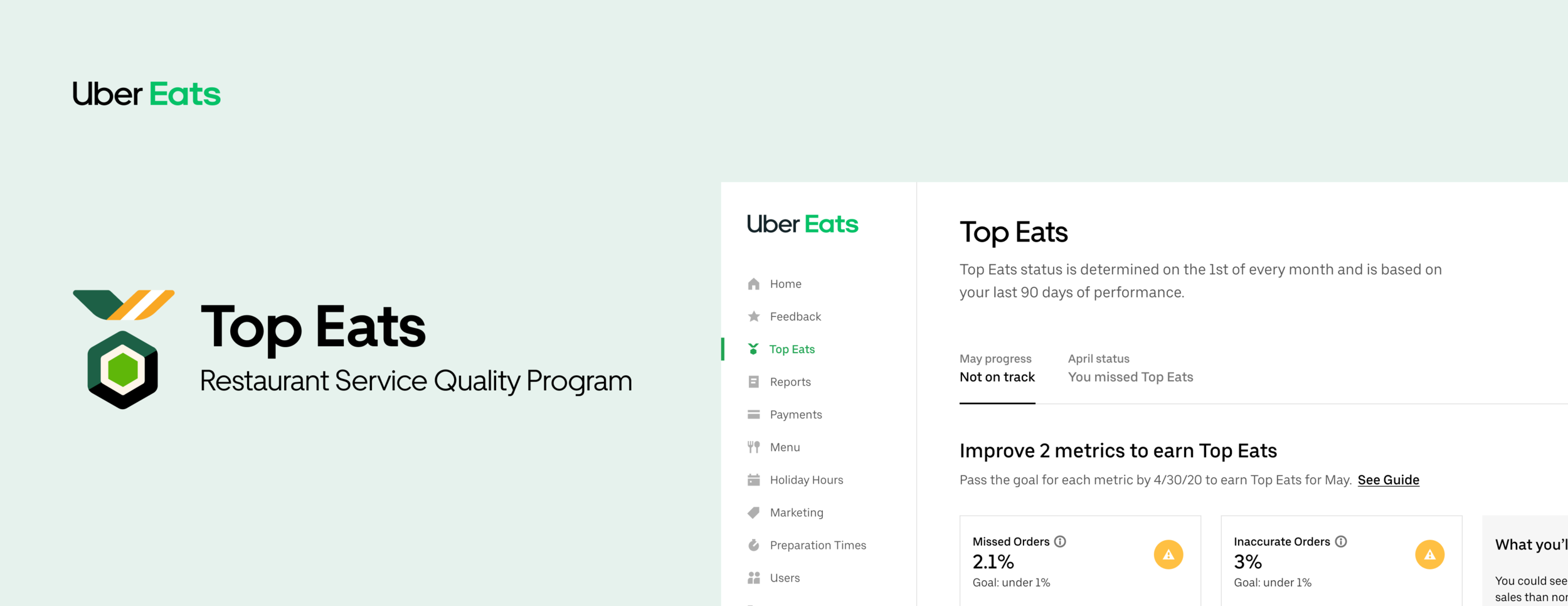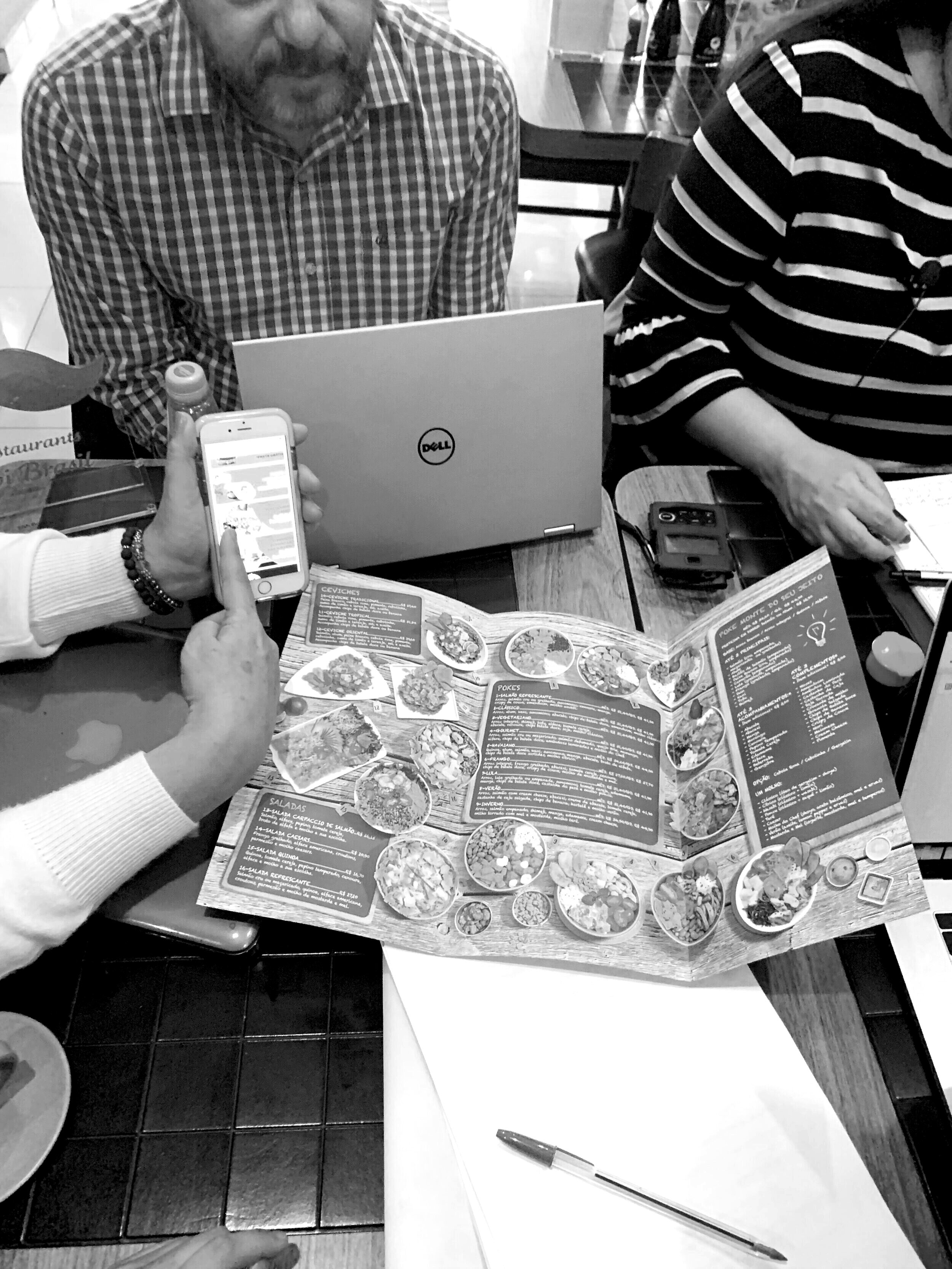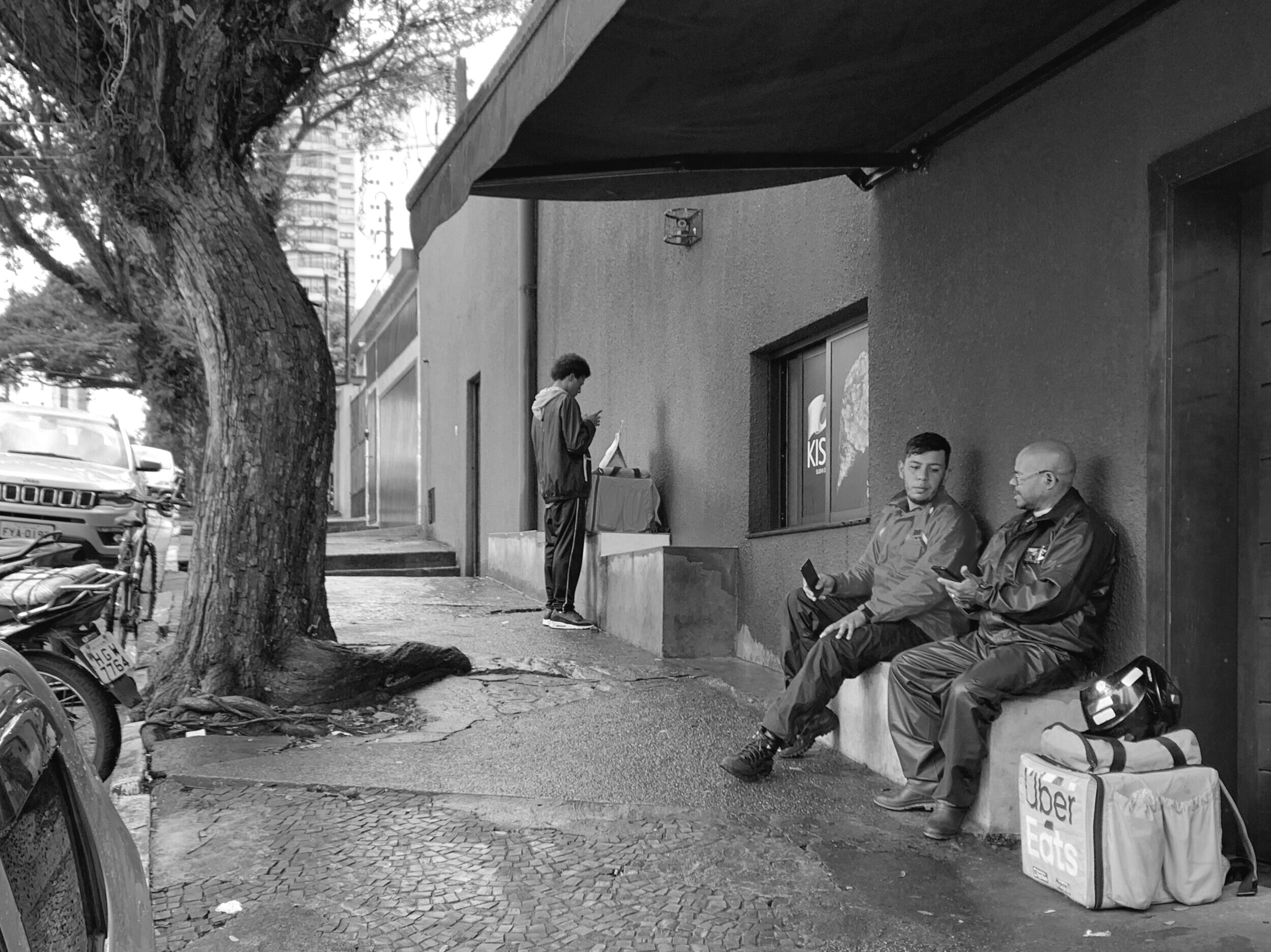Top Eats
Uber Eats | Restaurant Manager | Web
From stats, we found that eater conversion and retention are closely affected by the quality of their delivery experience. However, neither the definition of good quality service nor the benefits of becoming a strong performer is communicated clearly on the platform. Therefore, Top Eats program was created to help restaurants understand what high quality looks like and motivate them to consistently strive for excellence.
Project duration: 8 weeks
Team: PM, Researcher, UX writer, Engineering team, CRM department
My roles: research, ideation, concept testing, wireframe, UI/UX, prototyping, usability testing, final hand-off
Design Process
It was a 8-week project and I worked as the sole designer collaborating with cross-functional team. I used the double diamond design framework to guide me through the design process:
. . .
( context )
Problem
Restaurant partners do not know how they are performing relative to Uber’s expectation due to the lack of communication of service quality.
On Restaurant Manager, while we provide a snapshot of a restaurant’s operations, customers, and feedback data, we don’t contextualize what that means or how well it is performing. Also, we don’t articulate the benefits of strong performance to restaurants.
Home page of Restaurant Manager
Why is it important?
Food delivery experience is one of the most important factors for both restaurants and UberEats’ business success, since stats have shown that eater conversion and retention rates are closely tied to the quality of their delivery experience. Restaurants services, from getting the order right, preparing order, to packaging, involve in most of the major and immediate roles in providing flawless service to eaters to help the business by getting more reorders and new customers. On the other hand, restaurants’ high quality lays foundation for UberEats’ long-term success. Therefore, motivating restaurants to perform well would be a crucial strategy to UberEats business.
Design question and solution
To address to the problem, the product team decided to build a restaurant service quality program called Top Eats to give restaurants more context about standard of high service quality and use incentives to motivate them to improve.
. . .
(setting the ground)
Research
Learning what restaurant partners need
We conducted a field research outside of the US where our local competitors have similar programs. The team wanted to find out restaurant’s initial reactions to Top Eats program and hear their experience with the similar program. In addition to the research findings that focused on the setup of the program itself, here are a few other things that I learned from the trip:
Design Principles
How should it feel?
Based on my findings, I am inspired to create an experience that suits users need. I started by setting up principles of what kind of experience the design should bring to users:
Design requirements
Touch points
To get into the actual design, I started by identifying touch points of the project and drafting out feature requirements. The Top Eats page would be the key component of the project. In addition to the entrances within Restaurant Manager, monthly emails about Top Eats status updates would be another way to communicate and draw users to the Top Eats page.
Target audience
Top Eats is not for everyone.
Top Eats is a competitive service quality program. While all eligible restaurants can participate in the program, only the top 5-8% of them will finally earn as Top Eats. Among all restaurants, other than the ones already qualify, there are ones that are close, and ones that are really far from reaching Top Eats or might never be able to. Therefore, the experience should be differentiated between the relevant restaurant group and the irrelevant restaurant group.
Dynamic treatments
Relevant group vs irrelevant group
Monthly emails and home widget are two entrances to Top Eats page that communicate summary information to users regarding Top Eats status. For irrelevant group, the communication of these two touch points will be quiet as those restaurants might be less interested in hearing from Top Eats.
In reality, Top Eats status can be an on-and-off thing for many restaurants. Restaurants will have to pass all metrics in order to earn Top Eats status. It’s possible that restaurants are in between relevant and irrelevant as there is no fine edge. We need to provide dynamic treatments depending on restaurant’s stance.
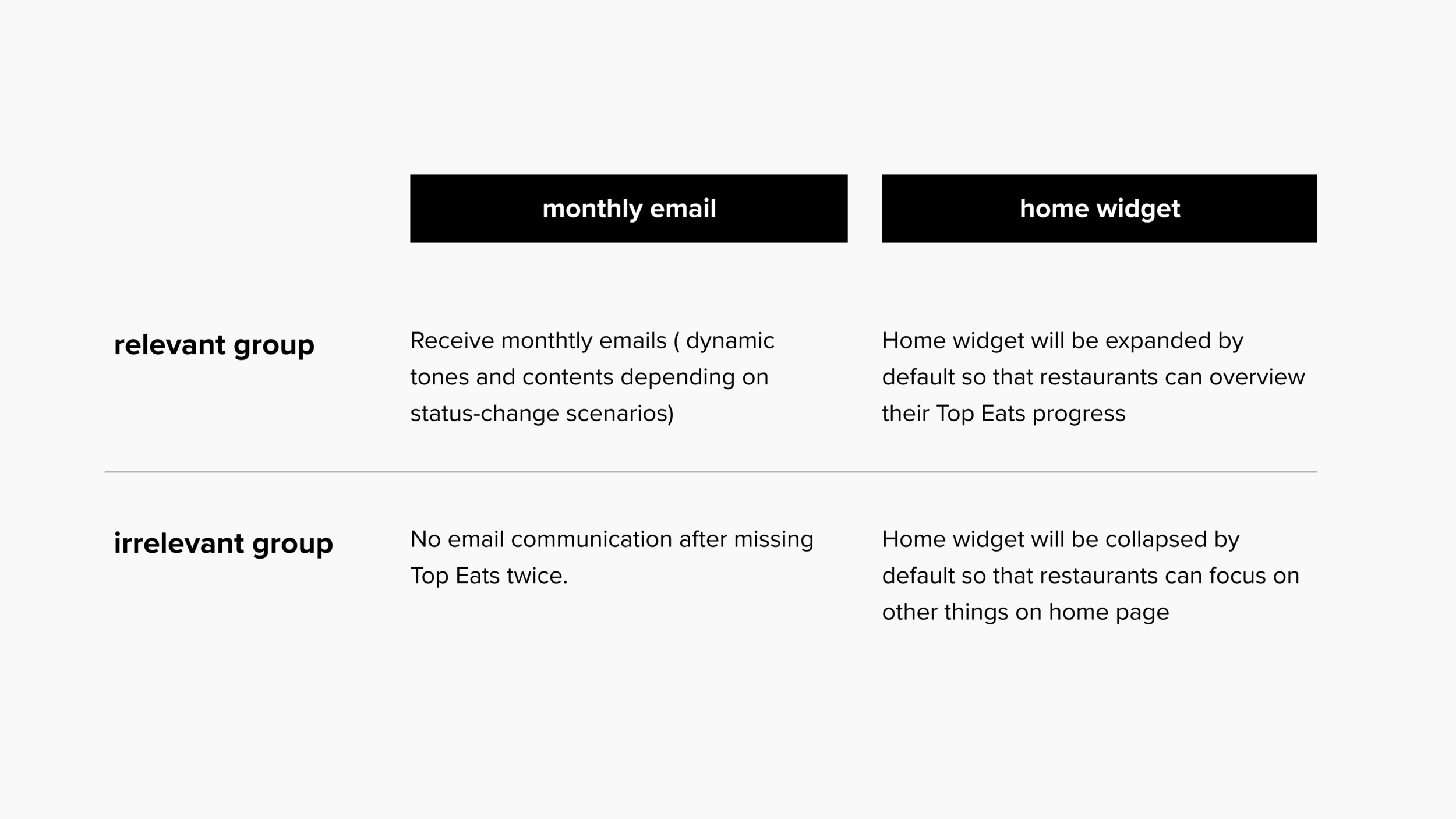
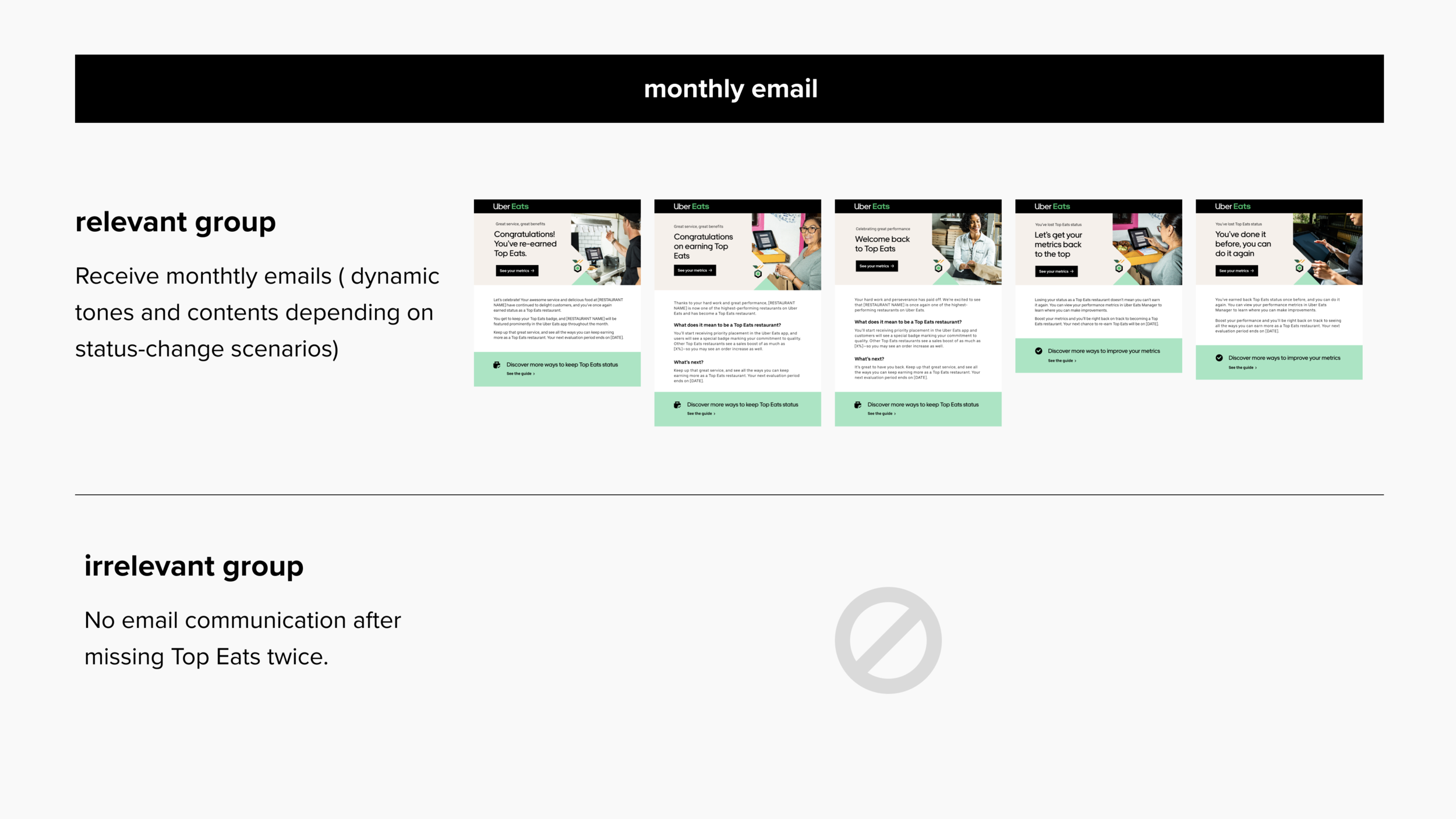
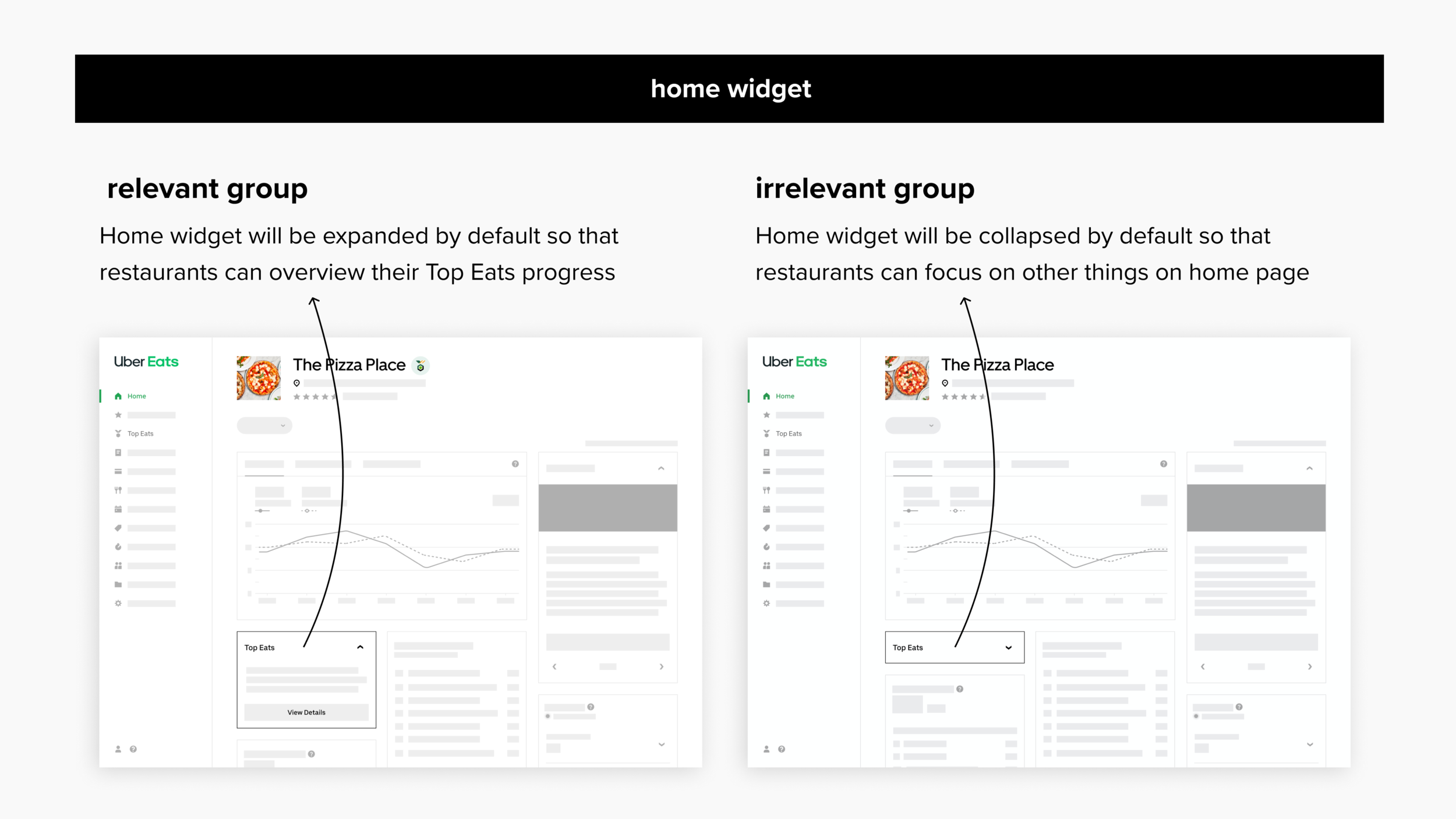
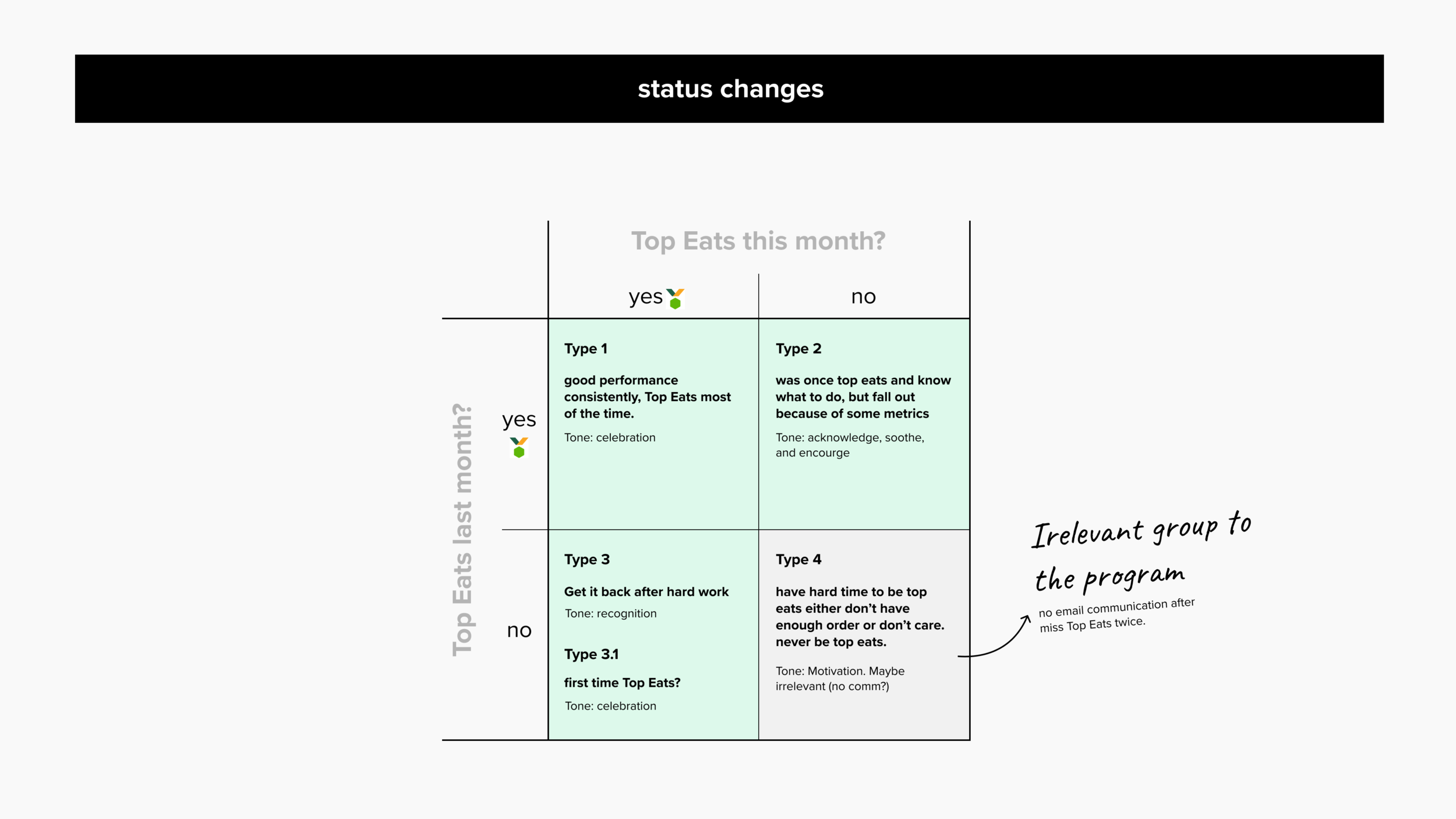
Early Explorations and iterations
I was exploring ways to display metrics and performance to help users quickly digest information and find out how they are performing and what need to be improve. Here are some early concepts:
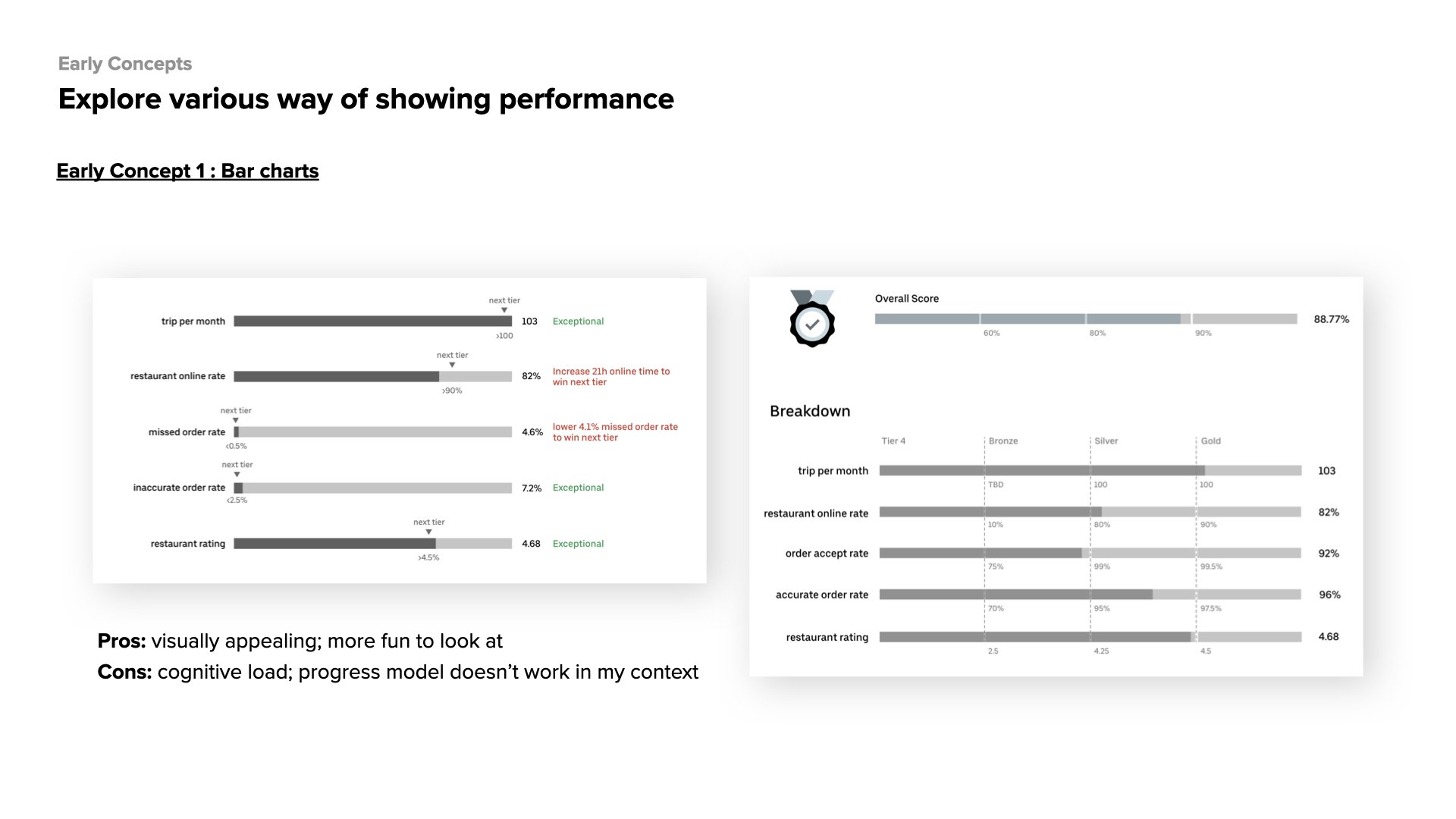
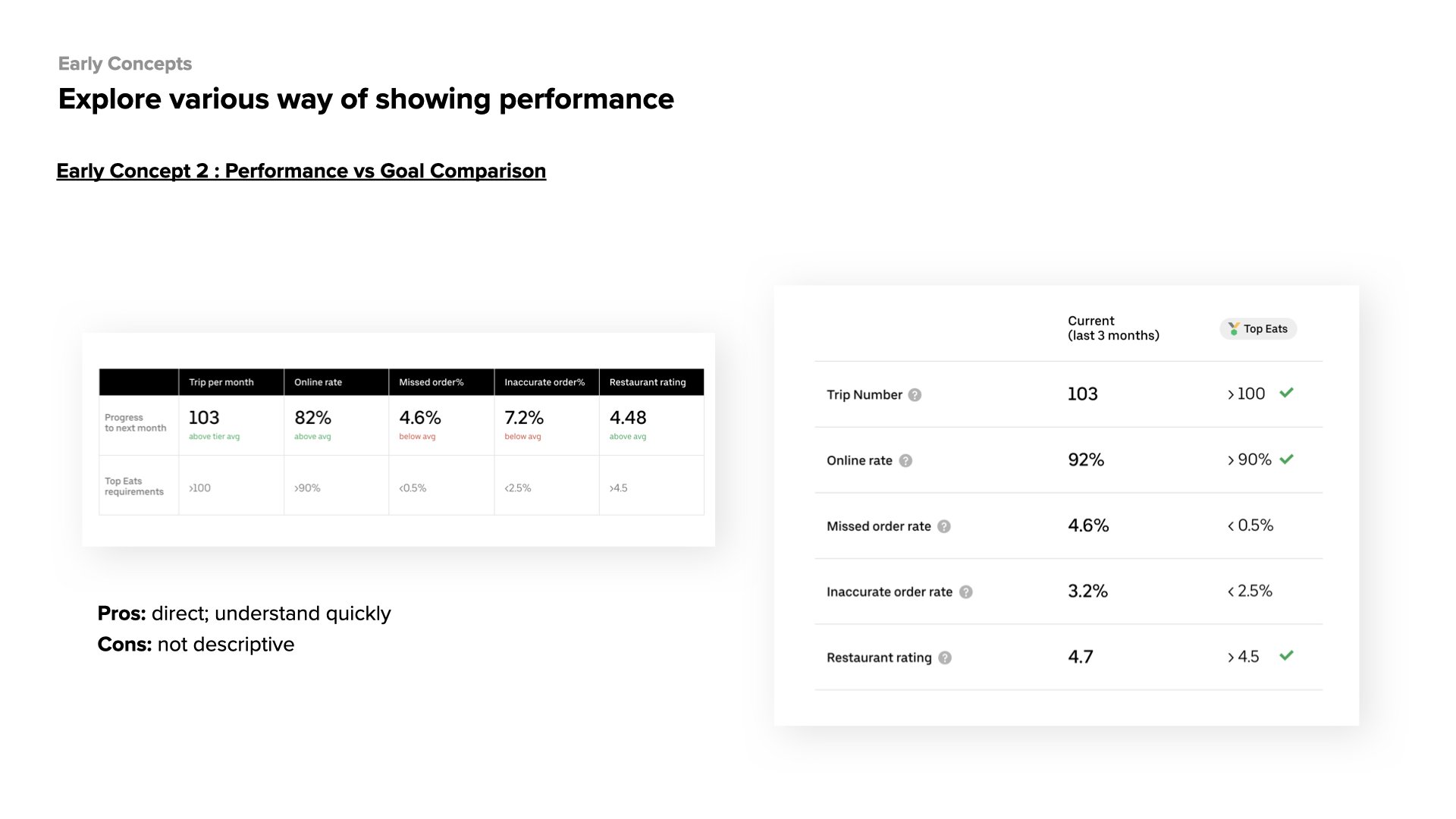
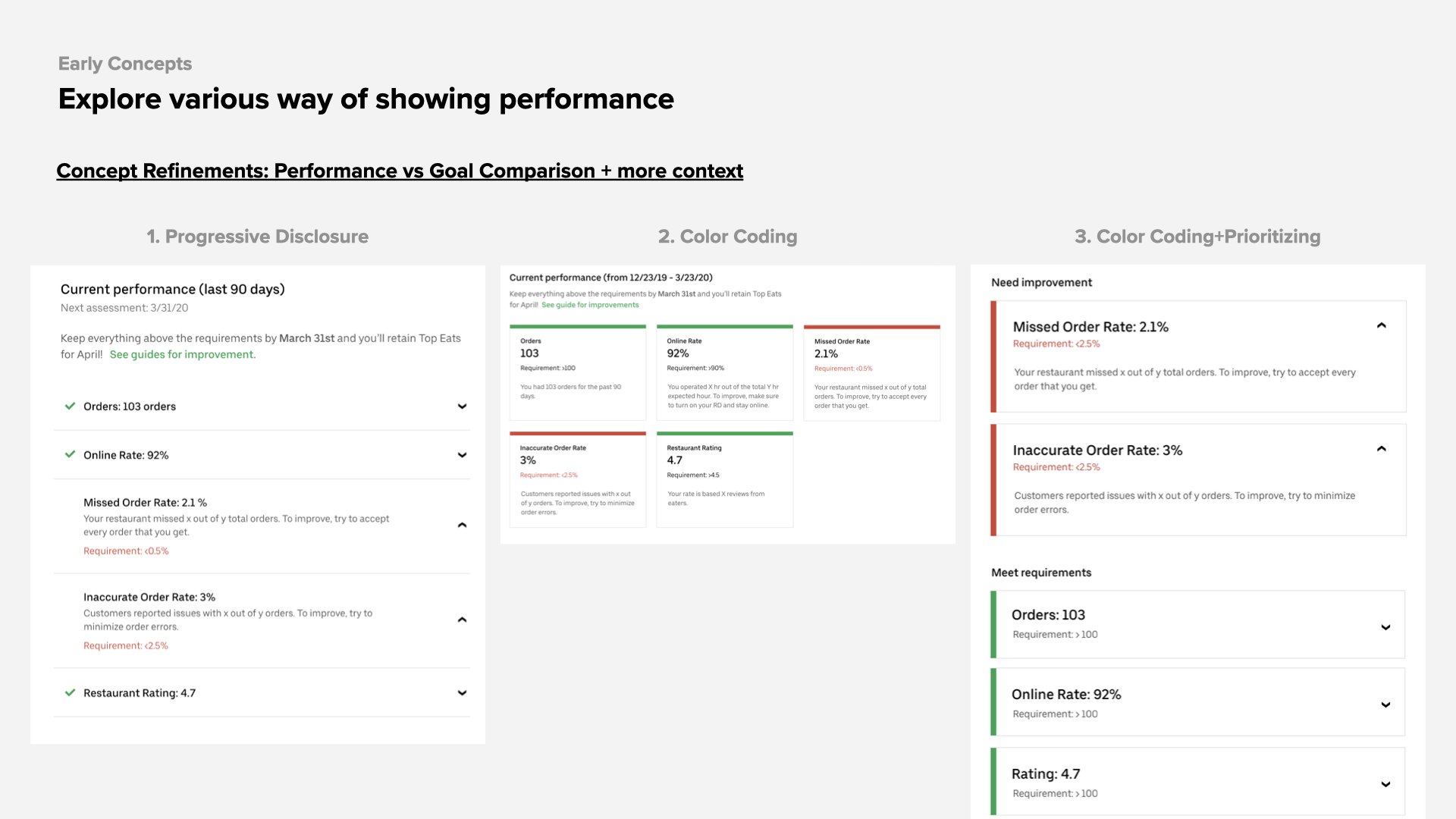
. . .
(execution and details)
Program Details
About Top Eats
On the 1st of every month, restaurant’s Top Eats status is evaluated based on their last 90-day performance on 5 operational metrics. Restaurants have to pass goals for all metrics in order to earn Top Eats status. Top Eats restaurants are recognized on Eater’s app with special treatments (receiving Top Eats badge, appearing in Top Eats billboard and Top Eats tag) to increase visibility.
Design walk-through
Top Eats Page
Tabs
On the Top Eats page, users can view two kinds of performance: 1. progress towards next month Top Eats status (current performance); 2. performance evaluation that determined this month’s status.
The two views can be switched by the tab. The tab also provides a summary of next month’s progress and this month’s status so that users can see high-level information at once.
When users enter the Top Eats page, the page shows the current progress towards next month Top Eats status (the first tab) by default. The decision was made to show current performance instead of performance evaluation from last month (the second tab) because it’s more important to have restaurant partners to focus on “now” , the stage they can still take actions on.
Progress towards next month’s status (first tab)
For the scorecards section, there are two sections: need-to-improve section and on-track section. The need-to-improve section with yellow cards is placed on the top so that users can quickly spot them and understand what they should focus on in order to earn Top Eats for next month. Users can also click the “See Guide” link to find out more in-depth tips for improvement guidance.
On each card, a short description gives users more context of how the number is calculated. For metrics that need improvement, the card also gives suggestions of actionable items to improve the metric. A tooltip is also included next to the metric name if users want to learn more about metric definition.
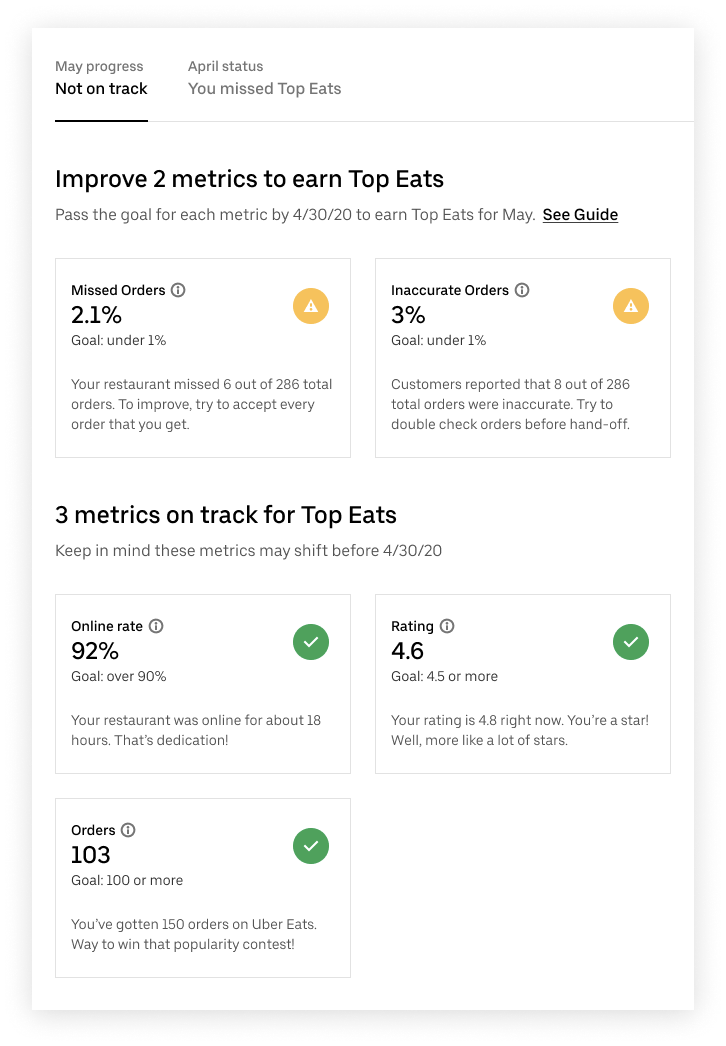
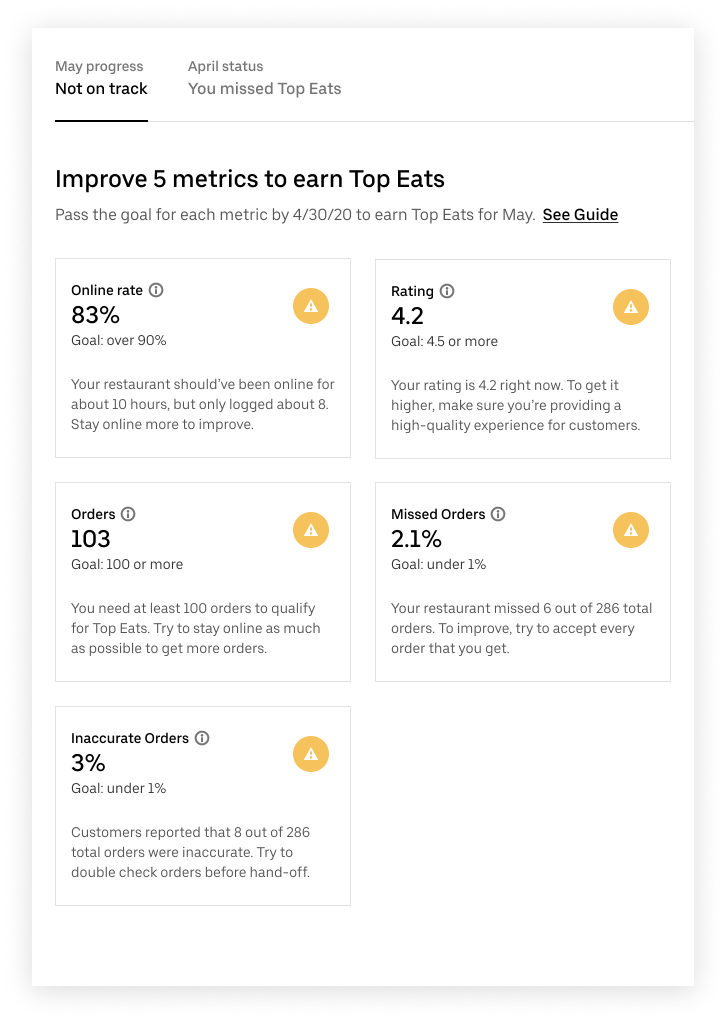
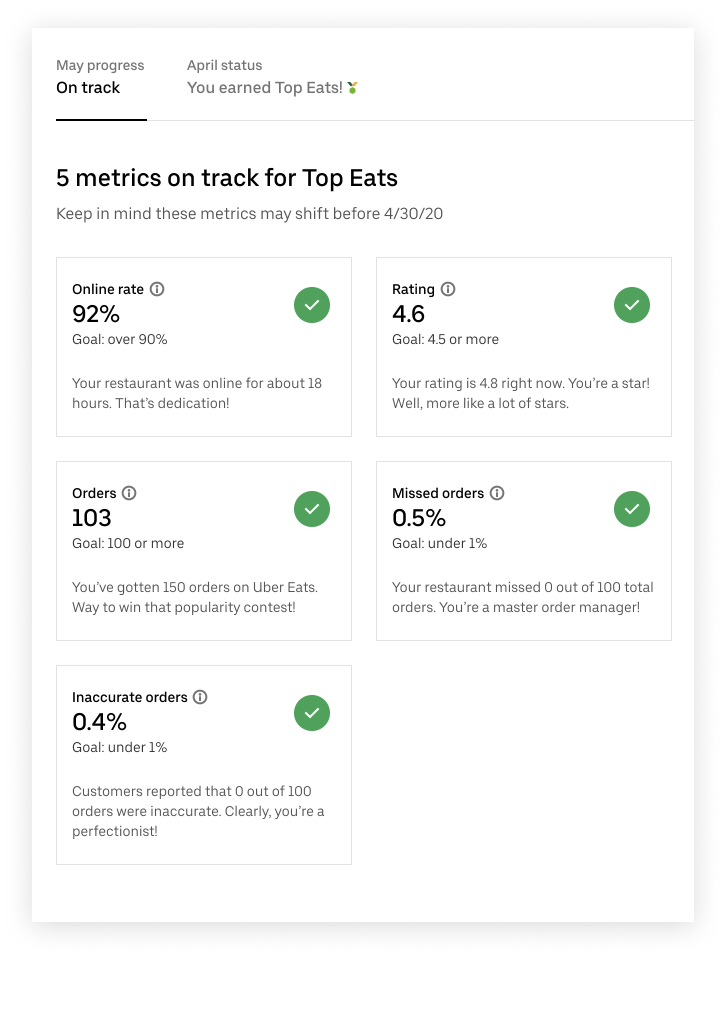
This month’s status & performance evaluation (second tab)
The second tab shows restaurant whether they achieved Top Eats for the current month and the performance based on the 90-day evaluation period. If a restaurant earns Top Eats, the restaurant would get a badge as recognition on Eater’s app.
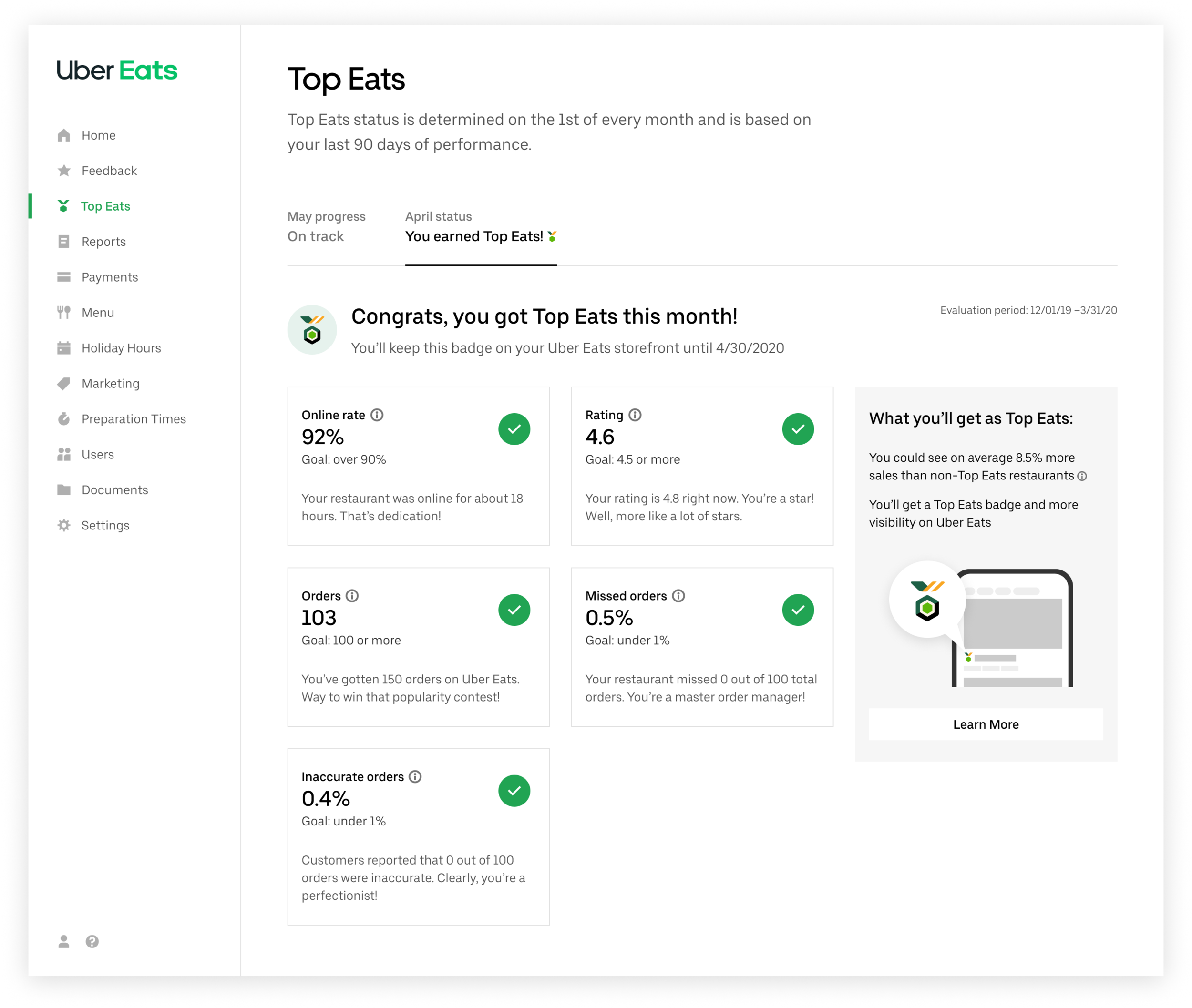
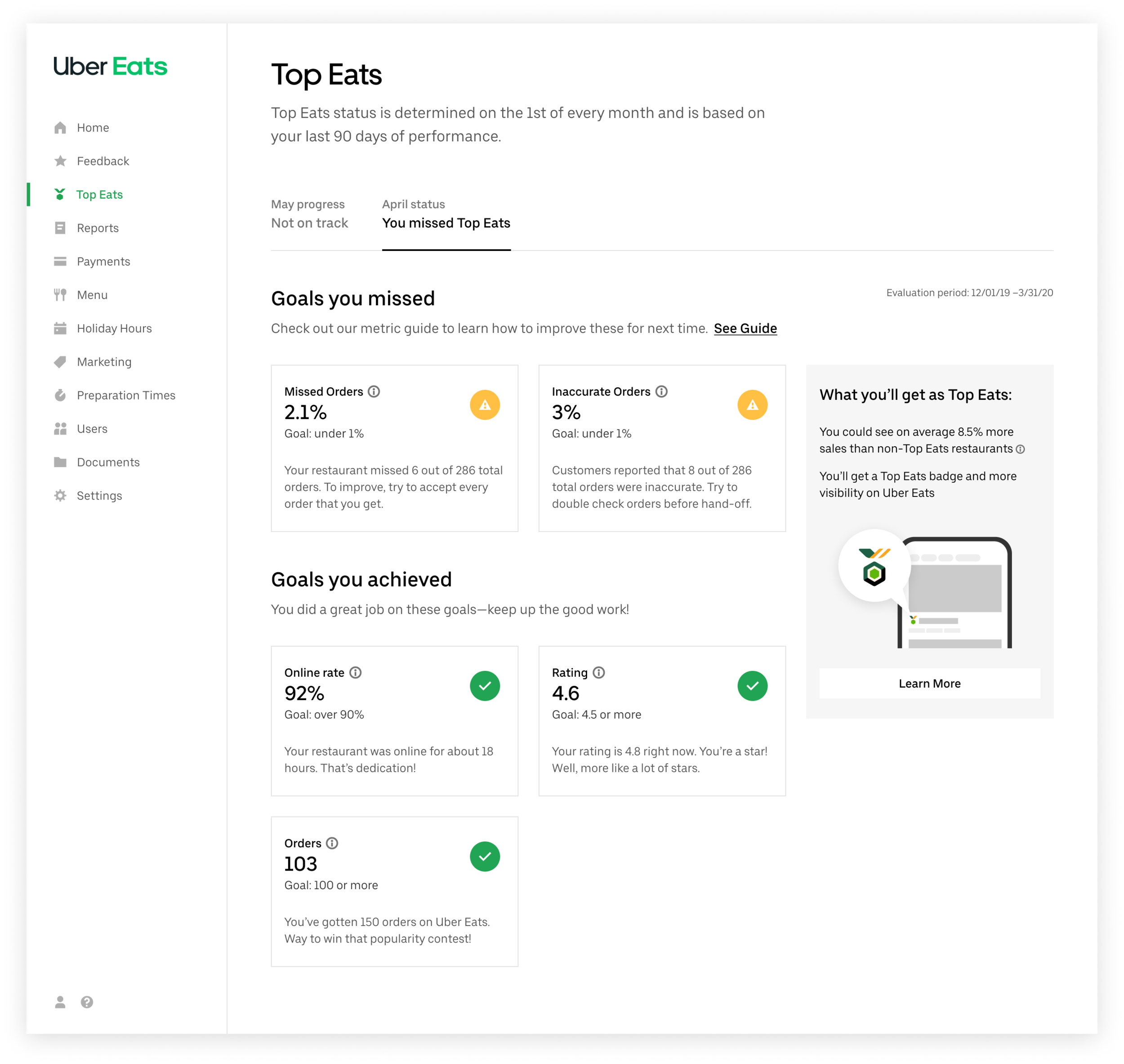
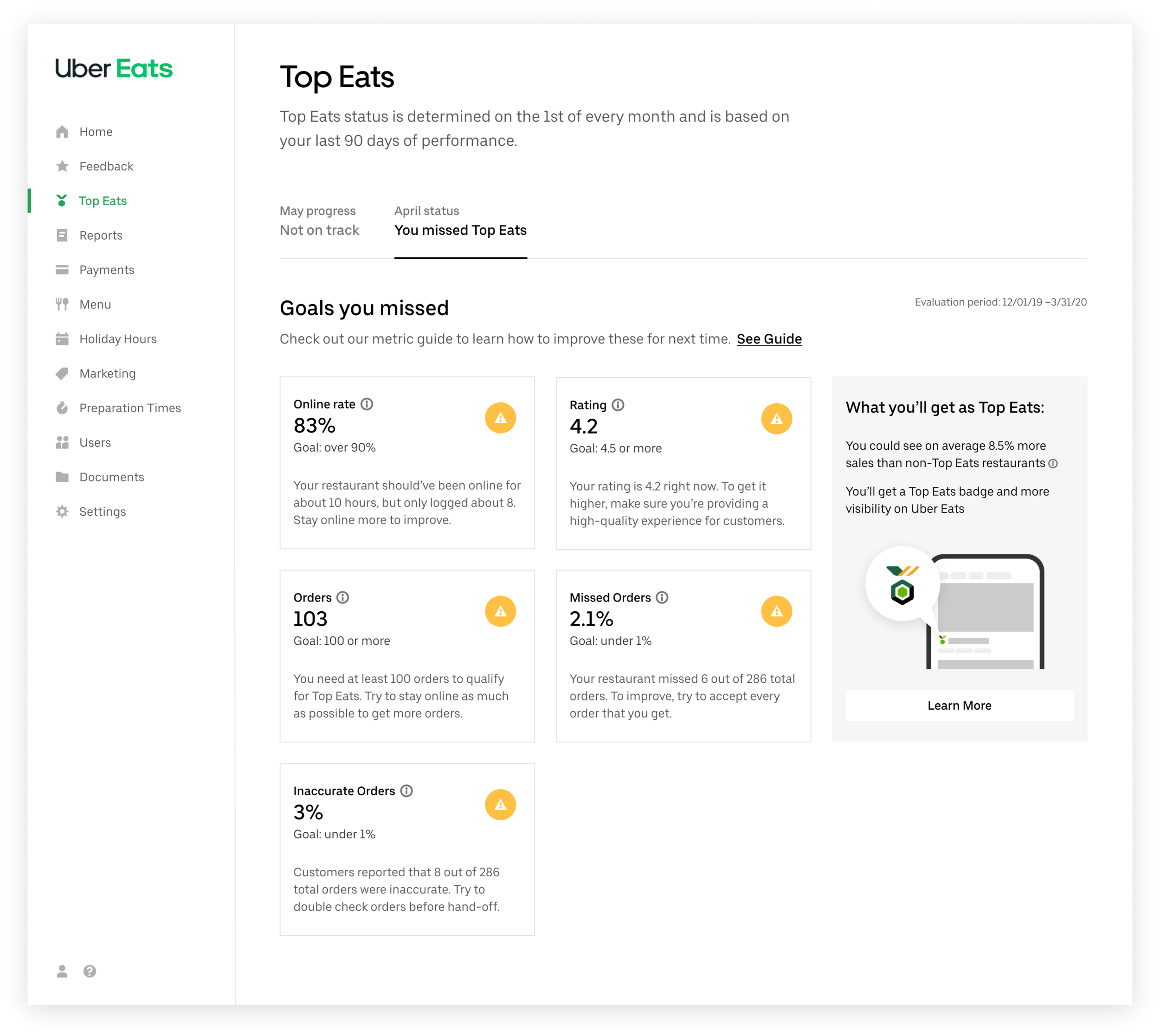
Home Widget
On home page, Top Eats widget provides restaurant partners a high-level summary of Top Eats progress and status. The message is consistent to the tab on Top Eats page.
Impact
6% average increase in sales for restaurants who achieve Top Eats status.
Top Eats was launched globally in the summer of 2020, which was during pandemic when it hit the world really hard. Local restaurants got huge impact on their business. And even with passion and love, a lot of restaurants had a hard time to sustain their business.
When we were at the planning stage for Top Eats, the world was still pre-covid. And although our original intention was to introduce a service program to educate restaurants, Top Eats came out as way to promote local business and rewards those who worked hard serving their customers with better visibility on Eater’s App, and we were happy to see Top Eats helps to bring a 6% increase in average sales for restaurants who achieve Top Eats status.
Thanks for reading!
Please reach out to me if you are interested in learning more design process :)
